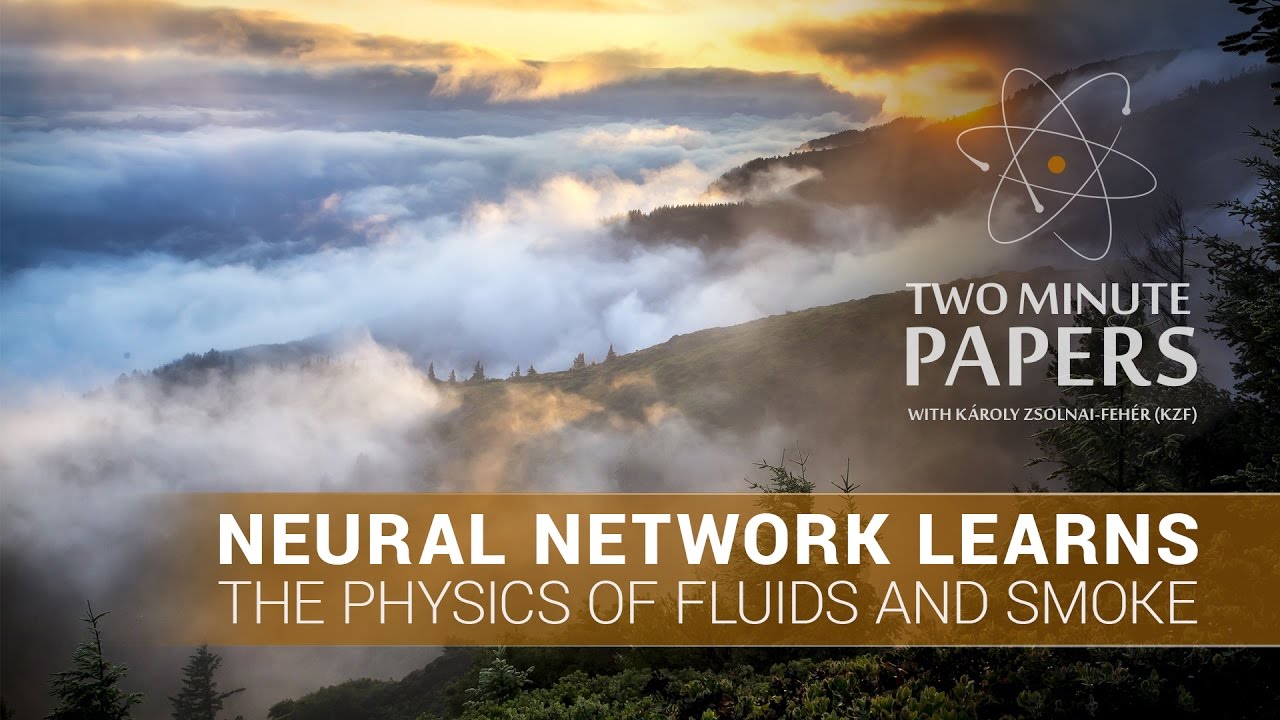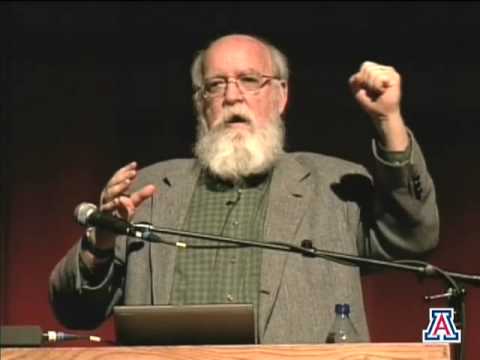Two Minute Papers
The paper “Accelerating Eulerian Fluid Simulation With Convolutional Networks” and its source code is available here:
http://cims.nyu.edu/~schlacht/CNNFluids.htm
https://users.cg.tuwien.ac.at/zsolnai/accelerating-eulerian-fluid-simulation-convolutional-networks/
https://github.com/google/FluidNet
The mentioned previous work has used an SPH-based Lagrangian simulation, performed the regression with regression forests, and the process also has included a fair amount of feature engineering. It is an excellent piece of work by the name “Data-driven Fluid Simulations using Regression Forests” and is a highly recommended read:
https://www.inf.ethz.ch/personal/ladickyl/fluid_sigasia15.pdf
https://www.youtube.com/watch?v=kGB7Wd9CudA
Video credits:
Surface-Only Liquids – https://www.youtube.com/watch?v=-rf_MDh-FiE&list=PLujxSBD-JXgnnd16wIjedAcvfQcLw0IJI&index=6
Schrödinger’s Smoke – https://www.youtube.com/watch?v=heY2gfXSHBo&list=PLujxSBD-JXgnnd16wIjedAcvfQcLw0IJI&index=5
Thumbnail image background credit: https://pixabay.com/photo-889131/
WE WOULD LIKE TO THANK OUR GENEROUS PATREON SUPPORTERS WHO MAKE TWO MINUTE PAPERS POSSIBLE:
Sunil Kim, Daniel John Benton, Dave Rushton-Smith, Benjamin Kang.
https://www.patreon.com/TwoMinutePapers
Subscribe if you would like to see more of these! – http://www.youtube.com/subscription_center?add_user=keeroyz
Music: Dat Groove by Audionautix is licensed under a Creative Commons Attribution license (https://creativecommons.org/licenses/by/4.0/)
Artist: http://audionautix.com/
Splash screen/thumbnail design: Felícia Fehér – http://felicia.hu
Károly Zsolnai-Fehér’s links:
Facebook → https://www.facebook.com/TwoMinutePapers/
Twitter → https://twitter.com/karoly_zsolnai
Web → https://cg.tuwien.ac.at/~zsolnai/
Source




Good because theyre gonna need it to build terminator 2
We might not have flying cars in 2025 but the graphics sure gonna look amazing.
I like this channel a lot.
MILLISECONDS?!? oh my goodness
so basically when I kill someone in the new video games in the future, it will be more realistic? Possibly even self aware that I'm doing so? Hmm…. Great idea lad.
amazing! subscribed ! Thumbs up if you are from zurich!
Its essentially curve fitting a multivariable dependant matrix.
This has the potential to create a revolution in aerodynamics.
Commercially I see Formula One smaller Teams taking advantage and leveling with big Teams
so thaths how Paris can program the holodeck so easily and fast?
But… Smoke is a fluid.
your channel is so informative and gives me great interest to create something very beautiful!
Fire, smoke and water in real time.for game is crazy
This could be used to perfectly predict weather!!!!
+1 sub
imagine the aircraft of impeller blades that could be generated…actually we can't imagine…we are human…let the NN do that…we just sit back and be impressed with a giant cargo aircraft that is 2 km long and carry hundreds of tons…
Itsz gud to hír sám grét hungárien akszent. Kíp áp dö gúd wörk!
Star Citizen needs this for oceans and weather ! 🙂
Soon even 3D artists will loose jobs. Ai will create a story and make a cartoon.
Fluid simulator – "I created this awesome simulation in ten minutes!"
Neural network – "I shat this out in a few milliseconds."
Human – "OMG they look the same!"
Fluid simulator – "WHAT THE FUCK?!"
So basically, this thing can be used for computational fluid dynamics applications right? Is that correct?
This needs to be put in game engines.
Imagine planetary physical clouds in Star Citizen.
Only a few more years before sound simulation is studied and applied accross neural networks to dynamically generate sounds based on physical material properties. Oh foley… Seriously this could replace foley entirely. It's been an idea I've floated around for about 7 or so years. Maybe sound is too complicated?
Holy shit, that must've taken a while to compute
I'm taking an introduction to neural networks course at university at the moment. How long does it approximately take to be able to design neural networks such as these?
OMG!!
after having read the whitepaper several times, i stil fail to understand how the CNN is trained
Melting face in the smoke: https://youtu.be/iOWamCtnwTc?t=2m49s
Dang that's high surface tension
Brilliant videos thankyou.
And now there's a paper called "Deep Fluids: A Generative Network for Parameterized Fluid Simulations" that, under certain situations, can simulate those things hundreds of times faster.
Oh, and the next generation of GPU will be BUILT for AI! At least, they mean to implement an AI in order to denoise the results of real-time path tracing! They will be called TESLA.
Basically, it seems like neural networks can be used for "dynamic baking" of a lot of rendering techniques – a huge step up from baked lighting and texture techniques we have to day. Not useful for accurate simulations but it could be a game changer in games and motion graphics.
Wait, if the nvidia RTX 2080 has tensor or AI cores… Could this be possible in games now? Or are we getting closer to such a thing?
All we need is to calibrate the neural network to meet our subconscious expectation of how physics behaves. The output from the virtual network becomes input to the human neural network, and passes the subjective validation test of our subconscious. Essentially, we are recreating a part of our own brain, the part that would generate smoke collision in your dreams at night, the part that decides what looks real and what doesn't. We have trained ourselves already (perhaps somewhat hard coded from evolution), now we just have to expose the machine to the same phenomenon we learned from. How accurate is our own internal model? Who knows, maybe not very accurate at all.. the fact that neural networks are so much faster kind of hints at a huge amount of mathematical innacuracy, but we still can't tell the difference.
So when the terminators wipe us all out, they'll know exactly how to avoid getting any on them. Good to know
great video keep it up
TECH CHALLENGE for all these nascent NN fluid simulators.
Form a pendant (hanging) drop. Lets assume a water droplet hanging from a pipette.
Measure profile of droplet.
From profile get curvatures along the profile.
Compare to Laplace-Young equation.
Be prepared for HUGE errors in the values of local curvature (more than 100%).
Hi,
I am working with research in computational fluid dynamics. Specifically, I assist in creating super accurate DNS simulations of isotropic turbulence.
I would like to disagree, that we are able to solve fluid dynamics problems accurately in general. There is a large range of problems which are way to complicated for modern computers to solve NSE accurately for.
I am super excited about this channel, which I just discovered recently.
nowadays, we call curve fitting as learning the physics